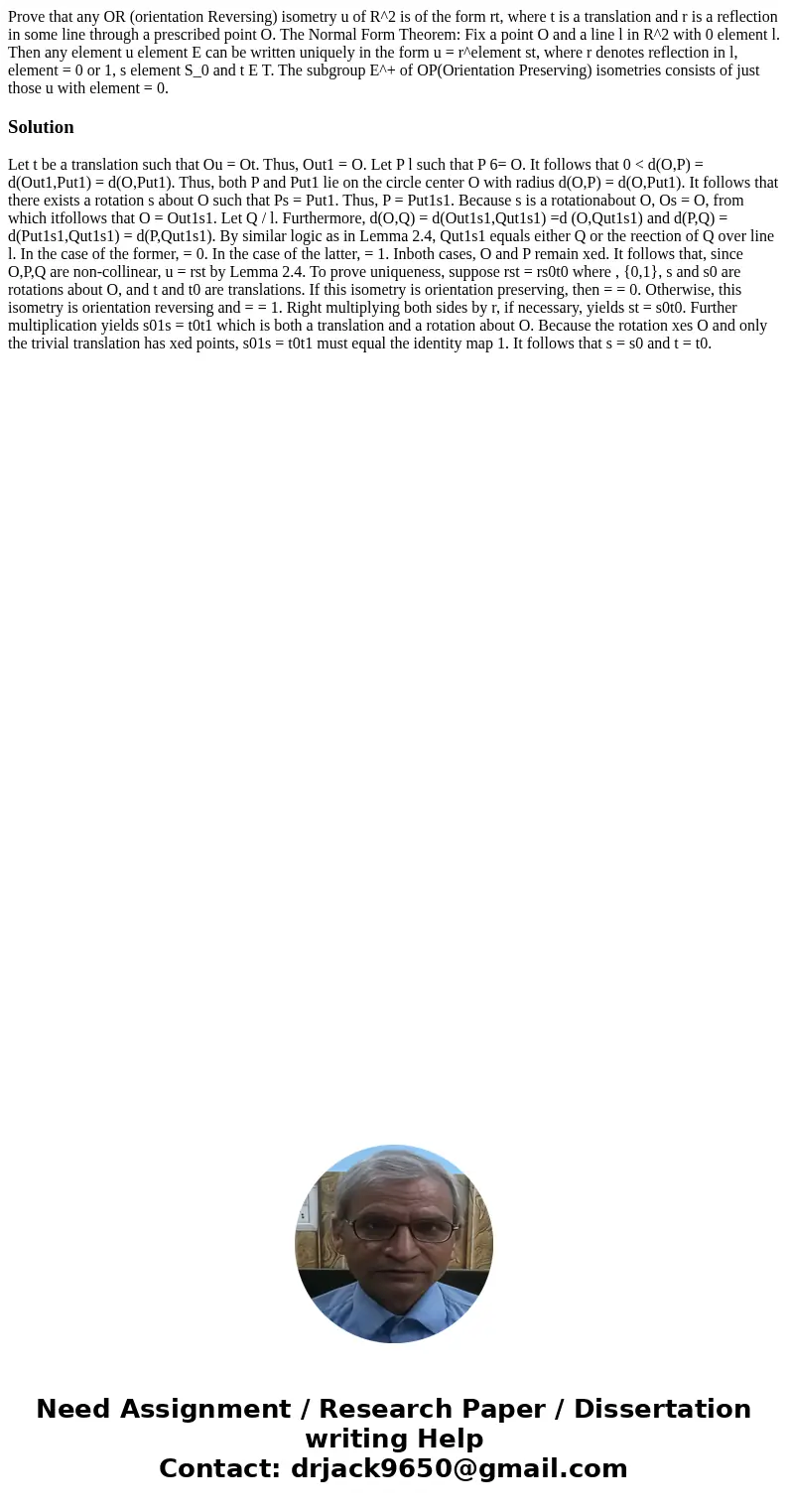Prove that any OR orientation Reversing isometry u of R2 is
Solution
Let t be a translation such that Ou = Ot. Thus, Out1 = O. Let P l such that P 6= O. It follows that 0 < d(O,P) = d(Out1,Put1) = d(O,Put1). Thus, both P and Put1 lie on the circle center O with radius d(O,P) = d(O,Put1). It follows that there exists a rotation s about O such that Ps = Put1. Thus, P = Put1s1. Because s is a rotationabout O, Os = O, from which itfollows that O = Out1s1. Let Q / l. Furthermore, d(O,Q) = d(Out1s1,Qut1s1) =d (O,Qut1s1) and d(P,Q) = d(Put1s1,Qut1s1) = d(P,Qut1s1). By similar logic as in Lemma 2.4, Qut1s1 equals either Q or the reection of Q over line l. In the case of the former, = 0. In the case of the latter, = 1. Inboth cases, O and P remain xed. It follows that, since O,P,Q are non-collinear, u = rst by Lemma 2.4. To prove uniqueness, suppose rst = rs0t0 where , {0,1}, s and s0 are rotations about O, and t and t0 are translations. If this isometry is orientation preserving, then = = 0. Otherwise, this isometry is orientation reversing and = = 1. Right multiplying both sides by r, if necessary, yields st = s0t0. Further multiplication yields s01s = t0t1 which is both a translation and a rotation about O. Because the rotation xes O and only the trivial translation has xed points, s01s = t0t1 must equal the identity map 1. It follows that s = s0 and t = t0.

 Homework Sourse
Homework Sourse